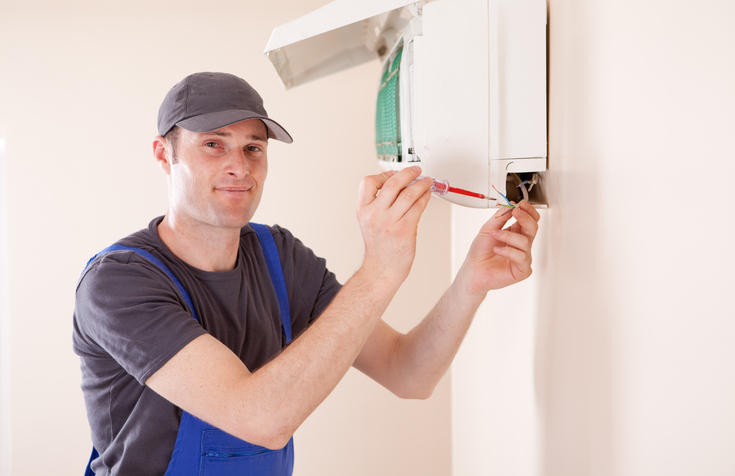Introduction
Humidity that’s too high makes rooms feel warmer, encourages microbial growth, and stresses building materials. Traditional central cooling often treats the whole house at once, which can leave problem areas—bonus rooms, additions, casitas—sticky and uncomfortable. Zoned equipment changes that equation by matching output to actual load in real time. When properly sized and configured, these systems remove both sensible heat (temperature) and latent heat (moisture) more efficiently at the room level. Homeowners dealing with seasonal heat swings gain a big advantage by working with pros familiar with ductless mini-split systems in Anthem, AZ, configuration in dry-to-monsoon climate patterns.
Ductless Mini-Splits for Better Humidity Control
1. Why Moisture Control Matters More Than You Think
Indoor relative humidity above roughly 60% encourages mold, dust mite activity, and musty odors—even if the thermostat reads “cool.” High moisture also makes air feel heavier, pushing occupants to drop the temperature setting and drive up electric use. Bathrooms above garages, bonus lofts, and converted patios are frequent humidity hotspots. Because these spaces may not tie into ducted supply runs, local moisture stays trapped. A room-focused cooling solution helps pull water vapor from the air before it condenses on walls, trim, or stored items.
2. Variable-Speed Compressors Tackle Latent Loads
Mini splits modulate capacity through inverter-driven compressors instead of cycling on/off like many older units. By ramping output down during part-load conditions, the indoor coil stays cool longer across each cycle, a time that supports continued condensation and water removal. Short, aggressive cooling bursts from oversized equipment often lower air temperature without pulling much moisture. Steady, lower-speed operation promotes better latent heat exchange. The result: drier, more stable comfort without chasing thermostat numbers.
3. Zoned Operation Targets Problem Rooms Directly
Moisture problems are rarely uniform across a house. A basement media room, sun-exposed upstairs bedroom, or hobby workshop may swing wildly compared to the main living area. Because each indoor head operates independently, you can run dehumidifying cycles only where needed. Many controls include a “dry” or low-fan setting that slows airflow across the coil to increase condensate removal. Targeted operation means you’re not wasting energy overcooling the entire home to tame one damp room. Greater control equals better comfort with less runtime.
4. Installation Details Influence Moisture Removal Rates
Proper line set length, condensate routing, and indoor head placement all affect how effectively a system pulls water from the air. Mounting too high above a thermal plume, crowding near ceilings, or tilting the cabinet can interfere with drainage and airflow. Refrigerant charge also matters: an under-charged system may show a temperature drop but fail to produce adequate condensate. Skilled technicians size the equipment to the room’s load, verify pitched drain lines, and confirm coil contact temperatures under operation. A good layout supports both drying capacity and long-term reliability.
5. Maintenance Keeps Dehumidification Performance Strong
Dirty filters reduce airflow and cut the amount of air passing over a cold coil, directly reducing water removal. Algae growth or dust in the condensate pan can clog drains and lead to interior leaks that reintroduce moisture. Seasonal cleaning of blower wheels, pans, and coil fins maintains transfer efficiency. Technicians also check refrigerant pressures and sensor readings that influence dehumidification modes. Simple upkeep preserves the moisture control benefits that make ductless cooling so attractive in difficult spaces.
Managing humidity is just as important as controlling temperature for lasting comfort, air quality, and building health. Room-based cooling technology gives homeowners granular control over stubborn damp areas that central systems struggle to regulate. Variable-speed operation, zoned heads, and proper installation add up to better water vapor removal where it counts. Ongoing air conditioner service in Anthem, AZ, keeps those gains intact across extreme weather swings. With the right setup, even challenging rooms can stay cool, dry, and comfortable after sunset.
Conclusion
Control indoor humidity more effectively with expert solutions from Five Star Air & Plumbing. Schedule your AC tune-up near Anthem, AZ, today—call us at 623-244-0414 to boost comfort and system performance fast.
📌 Your Local Comfort Experts — Now Serving You as Five Star Air & Plumbing, Offering the Same Fast and Air conditioning Services You Know and Trust.




